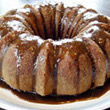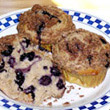

Donuts are one of the most popular and sought after food in the world. The variety of donuts and the endless possibilities with regard to taste it one of the most versatile meals available. Not just for breakfast, donuts can be had as snacks or treats throughout the day.
Donuts are easy to make, but if you have some of the proper equipment. A deep fryer and a donut cutter is essential. Then, you need ingredients. For about 3 dozen small donuts will need: 4 and half cups flour, 4 teaspoons of cooking soda, 2 tablespoons butter (unsalted!), Half teaspoon salt, 2 eggs, 1 cup sugar, 1 cup milk; then, for the taste, half teaspoon nutmeg (freshly ground works best!) and a teaspoon vanilla complete.
Take all the dry ingredients except sugar and mix everything together in a large bowl that allows the mixing. In a separate bowl, beat eggs and sugar until becoming light. These will be added to the milk, vanilla and melted butter. Whip this mixture and then add to dry ingredients in the larger bowl.
For the best homemade donuts, keep flogging this mixture until it becomes a soft, uniform paste. To make the best donuts results there should be uniformity of ingredients, but should not be operated above the liquefaction point. Perfect homemade donuts require doughy texture to be achieved with the mixture.
The homemade donuts "dough should be smooth and easy rolling. If after mixing all the ingredients of the dough is slightly up, chilled for an hour, until the donut mixture becomes more stable. Once this is achieved, take the homemade donut dough from the refrigerator.
Flour a counter part to the growth of yeast donut. Remove the entire mass of the donut dough in bowl and floured countertop, roll and a 3 / 8 inch thick mass. Then take the donut cutter and your donuts! All additional pieces, such centers already cut donuts will be rolled together with others and become a 3 / 8 inches think mass for more donuts. After all donut dough is cut, to take all the extra pieces and roll into small balls for donut bites.
The next step is frying homemade donuts. Make sure the deep fryer is 370 degrees. Any cooler and donuts will absorb much oil. Put in a single layer of donuts at a time. Once started the homemade donuts floating on the surface and look golden brown on the bottom, it is time to convert them. Wait a minute or two until the other side is golden and take the donuts from the fryer.
Let drain on fresh donuts from the fryer for a few minutes before being transported to a paper towel to complete the process. While still hot, finally, to your homemade donuts with the addition of your preferred Completion of powdered sugar or cinnamon frosting and sprinkles. Enjoy!
























